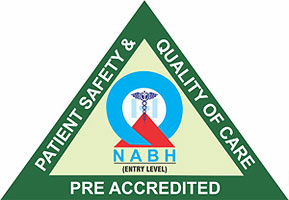In complete darkness, no one can see. Fortunately, there is generally always some light. Even if it’s merely dim starlight, your eyes can sense it. What’s truly remarkable is how little light is required to see. So, if you understand how our eyes operate, you would know they require light to see.
Continue reading to find out how our eyes see at night and how to improve our night vision.
If it is dark, how do we see?
Our vision range under different light conditions is provided by three parts of the eye:
- The Pupil: In many ways, the eye is very similar to a camera. As in a camera, the aperture extends and shrinks to let in more or less light; in the same way, the eye’s pupil works. The pupil shrinks in bright light to physically block the amount of light reaching the retina and expands greatly in darkness.
- Rod and cone cells: To see light, our eyes need two types of cells: rods and cones, and the cone cells require intense light to see the fine details and colors. Whereas the rod cells can only see in black and white and have poor resolution but are sensitive in low light as well.
- Photopigments: Photopigments are light-sensitive compounds found in both rods and cones. When exposed to light, photopigments undergo a chemical reaction that turns light energy into electrical activity that our brains can understand. Rhodopsin is a photopigment used by rods that is essential for night vision. Intense light decomposes these pigments, limiting sensitivity to dim light. In a process known as "dark adaptation," the eye adjusts to see in low-light situations by causing the molecules to regenerate.
Getting your eyes ready to see in the dark
Our eyes adjust to bright light much faster than they adjust to darkness. Cones reach peak sensitivity in five to seven minutes, but rods require thirty to forty-five minutes of utter darkness or more to achieve 80% dark adaptation. Total adaptation to darkness can take many hours.
Here are some suggestions to help speed up the process:
- Dim the brightness of your computer monitor: Your eyes will have to adjust less if you keep the brightness of your computer or TV modest.
- Avoid gazing at bright lights directly: Looking directly at a bright light can significantly lengthen the time it takes your eyes to adjust to the darkness. Close one eye if you must look towards a light to retain some darkness. When driving at night, avoid looking directly at high beams approaching you and instead focus on the road lines to keep on course.
- Put on sunglasses: A few hours in direct sunlight can diminish your capacity to adjust to darkness by 10 minutes, and 10 days in direct sunlight can cause a 50% loss of night vision. Wear grey-tinted glasses to filter out the entire visible spectrum, and the darker the lenses, the better it is. As the rod cells do not detect the color red, wearing red-tinted glasses for 20–30 minutes before entering low light will also help. This is a tactic pilots utilize before night flights.
- Allow your eyes to adjust naturally: Close your eyes and cover them for a few moments before entering a dark place and risking colliding with something. Additionally, exerting light pressure with your palms can aid in the adjusting process.
Words from Ojas – Eye Hospital in Mumbai
It is critical to be able to see well at night for both your convenience and safety. Get enough vitamin A, avoid smoking, and wear sunglasses outside to help preserve your night vision. Learn more about how to safeguard your eyes with Ojas – Eye Hospital in Mumbai. They have a knowledgeable team of eye specialists to support you with the best of their expertise.



